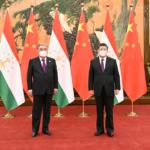To think of Australian cricket is to think of the hallowed green and golden yellow shirt. Of Shane Warne and Steve Waugh in the baggy outfits and large collars of 1999; of Ricky Ponting in bright yellow with a splash of green on the sides; of Adam Gilchrist in gold and bottle green union of 2007, and Mitchell Starc in the all-gold 2015.
Of various other heroes who have rendered the hues of the jersey meanings and emotions deeper than the identity of a country’s sporting uniform. Green and golden yellow — yellow being the most resplendent hue — stands for power, beauty and courage, those characteristics that define the country’s sporting culture.
For 15 years, yellow was the sign of dread and horror, of jealousy and awe. An apparition of the mere colour was enough to induce a cold sweat and stomach churn. No other colour in the game — the different shades of green, blue, maroon or black — could stain, forget discolour, the yellow.
Yellow has not faded this World Cup, but just that a vibrant, bright Blue has put it to shade, letting the tournament aglow in blue. This edition has all been about the Blue Brethren. It is not only the most omniscient colour, but also the colour that excites everyone, the shade that lingers in the eyes and consciousness, the colour that has defined the tournament.
For 43 days, it has been a carnival of blue, waiting for a fitting closure, a coronation, an official passing of the crown. It began on a Sunday and would end on another Sunday, six weeks apart; it began with Australia and ends with Australia. If they beat the five-time world champions, there would not be a more symbolic moment in the World Cup, a transfer of power, a definite sign of the new world order. When the colour blue achieves mythical powers, when it begins to breathe a life of its own.
Between the Sundays, the Men in Blue (a marketing caption that has over the years been embraced by the fans) have produced such a lofty brand of cricket that their journey has remained the central narrative of the tournament. They are the most-watched team not because they are playing at home, but because they are also the most watchable team.
Like the Men in Yellow of the aughts, the men in blue of 2023 are a blend of twinkling skills and immense personalities orchestrating a version of cricket that’s incredibly thrilling. There has been an unputdownable quality about them —you watch them and are immersed into a world of you and them, an experience that enthralls and educates you, revealing the different multiverses of the game.
Like the Australians from 1999 to 2011, every cricketer inhabits a space in not just your head, but some in your heart too. Loyalties were kept aside when one watched Warne and Waugh, Gilchrist and Mike Hussey. Time zones were forgotten. Like them, there is no mundane cell in this Indian team.
Each one demands a space of his own; one tunes into each one for a different experience. Rohit Sharma for the dopamine rush of a batsman ripping new-ball bowlers apart; Shubman Gill for a peep into the future of the game; Virat Kohli is a pill to forget all your problems in life; Shreyas Iyer to feel young again, to transport yourself back into your carefree youth; KL Rahul teaches about the powers to harness the outer reaches of your outsized talents; Jasprit Bumrah about the nature’s way of conceiving something uniquely natural; Mohammed Shami about the geometric patterns a white leather ball could trace; Kuldeep Yadav about the unfathomable mysteries of the world.
In them, cricket finds perfection and symmetry, a sense of fulfillment. There is something for everyone, the romantics, the connoisseurs, the pundits and the lay watchers. Or one needn’t be any of these, but could still search for your remote during match-time. They are an addiction that keeps one craving for more. There is nothing jarring about them — so much so that they could be the near-perfect white-ball team. Everything seems organic, the pieces revolve with perfect synchronicity. Rather, it’s too good to be a team, or even a dream team. But a dream itself.
For similar reasons the world once tuned in to watch Australia, they rush in to watch India. Not just the one billion-plus home supporters, but probably every pair of eyes that has cast itself on them.
Biggest stumbling block
But one hurdle remains to splash the whole tournament and the trophy with large ears blue. That is to rip the yellow apart. They have already done it once, in the first game, but with fleeting jitters. But India would be better aware that Australia is a different proposition in knockouts. It’s when they suddenly reproduce the qualities of their national flower, the golden wattle, considered a symbol of hope, resilience and unity, the inspiration for splashing their jerseys yellow.
Only three times in the last seven editions has Australia not lifted the World Cup. In all those instances, the team that defeated Australia went onto lift the trophy (India in the 2011 quarterfinals, England in the 2019 semifinals and Sri Lanka in the 1996 final).
Beating them emboldens teams, fills them with unbeatable self-belief. The members of the 2011 World Cup still regard the victory over Australia — on the very ground they would play the final, but before it was refurbished and renamed — as the most significant moment of their career. Suresh Raina considers his unbeaten 34 the most important knock of his career. Virender Sehwag felt it was the moment they won the World Cup.
Parallels are already being drawn. Pat Cummins was asked whether the Indian team reminds him of Australia in 2003. He would break into a smile and reply matter-of-factly: “Neither player from both sides were there in 2003, so it feels a long time ago. But they’ve been playing really well, undefeated in this tournament.” He did not gush praises, but one could see the shine in his eyes, the sudden surge of excitement.
His counterpart Rohit Sharma was asked about the aura of the Australians of a different era, and he would dismiss it. “I don’t believe in anything as an aura. What happened in the past does not bother me. I don’t overthink about the past or the future,” he said. But whatever his convictions are, a square light will burn around their heads if they conquer Australia.
The fatalists among the fans have already seen cosmic connections. In 2003, Australia were on a 10-match winning streak before the final; India on eight; In 2023, India are on a 10-match winning run and Australia on eight. The stats-diggers have already begun to compare 2007 Australia Invincibles and 2023 India Unbeatables with numbers and detailed analysis. All of these are subplots that make this contest game-defining. Just the last step is all that beckons, a leap into cricketing immortality, for Blue to stamp out the Yellow.
Source: The Indian Express
















